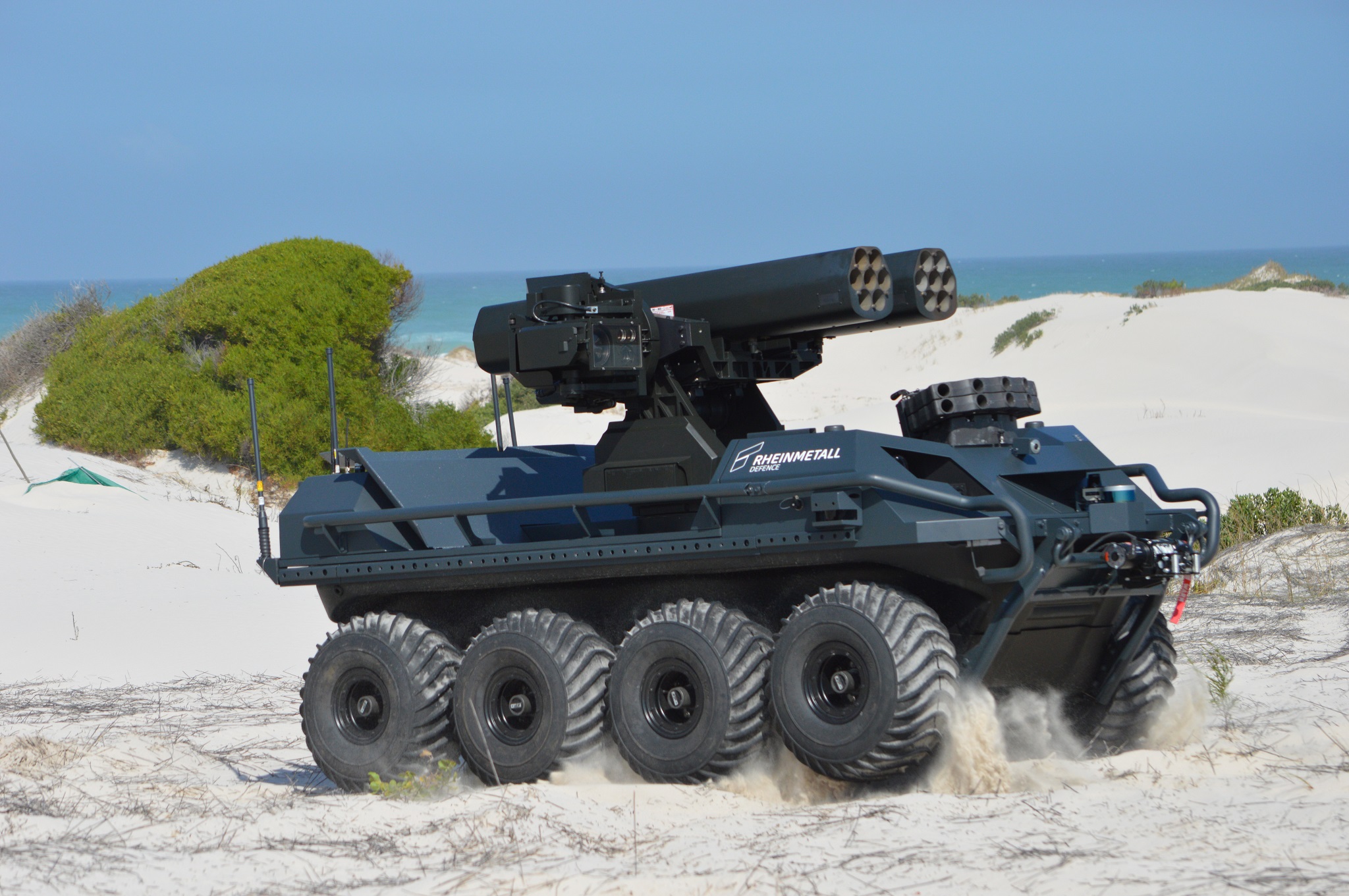More and more states have unmanned land vehicles that can be armed or used for surveillance. Programmed missions are carried out completely autonomous.
The Rheinmetall armaments group has developed a “Multimission Unmanned Ground Vehicle” (MMUGV) that is about to go into series production. The “Mission Master” is currently on display at various military trade fairs. Rheinmetall is advertising that the drone tank can be used in combat, for troop supply, surveillance, reconnaissance, for evacuation of wounded soldiers or for fire-fighting. The Mission Master is also intended to transport troops.
The vehicles can be operated either remotely, semi-automatically or completely as robots. The “Mission Master” covers all three possible options. In fully autonomous operation, the operating soldier only has to program the mission and observe its progress. If necessary, the sequence can be interrupted by the user.
Mission duration of eight hours
The system, developed by Rheinmetall’s Canadian subsidiary, is powered by an electric motor and consists of a base platform that can be converted as required for various mission scenarios. It can be deployed for around eight hours. The tank has eight wheels on which a track can be mounted if required. The “Mission Master” should carry up to 600 kilograms. With a low payload, the vehicle should even be able to swim.
In the version for “Force Protection”, the drone tank is used for combat support, for perimeter protection, escorting, target acquisition or marking targets. For this purpose, the “Mission Master” is armed with 70 mm rocket launchers from the French company Thales. These are actually air-to-ground missiles which, according to Rheinmetall, were mounted on a tank with high firepower for the first time. The rocket launcher, which brought 14 rockets into target during a firing training in South Africa, is integrated into the “Fieldranger Multi” weapon system. This means that the tank also has a grenade launcher or a large-calibre machine gun.
Alleged order from the Bundeswehr
According to Rheinmetall, the control and mission of the drone tank can be controlled completely digitally. The vehicle is embedded in the digital soldier system “Infantryman of the Future” which Rheinmetall markets for NATO under the name “Argus”. Allegedly, the “Mission Master” has already been ordered “from Italy and the Middle East”. The Bundeswehr is said to have also placed an order to test the device for military use.
If the German Ministry of Defence were to decide to purchase the Mission Master, Rheinmetall would be able to compensate for the collapse of its UAV business. Since 2005, the Group had sold 60 “small aircraft for target location” (KZO) to the German Armed Forces, but the device is no longer being reordered. Initially, Rheinmetall was also the prime contractor for the “Heron” German Armed Forces drones in Afghanistan, but Airbus is now doing the job.
Automation of military vehicles
Rheinmetall has noticed a growing trend towards armable unmanned land vehicles, citing the Russian URAN-9 drone tank as an example. But Rheinmetall’s German subsidiary in Unterlüß has also been researching unmanned land systems for many years, but they never went into series production. In the noughties, Rheinmetall developed a “remote MobRob subsystem” for the Bundeswehr, which is part of a manned armoured wheeled vehicle and, if necessary, explores the surrounding area. From 2005, Rheinmetall demonstrated a similar system to the “Mission Master” with eight wheels and significantly larger than “MobRob” at robotics events. The Group is currently working on the automation of ordinary military vehicles. Under the title “Road transport with robot assistance functions” (StrAsRob) Rheinmetall and the Diehl armaments group, the Bundeswehr University and the Fraunhofer Institute FKIE are conducting research into “automated follow-on driving of military trucks” in convoys.
Unmanned land vehicles are also used by some states for border surveillance. A few years ago, an international consortium involving the EU border agency Frontex developed two prototypes based on Israeli experience. Among those interested in this “Transportable Autonomous patrol for Land bOrder Surveillance” (TALOS) were Greek and Turkish border troops. The European Commission had taken over two thirds of the 20 million euro research. However, the Frontex tanks have not yet been used.
Image: “Multimission Unmanned Ground Vehicle” (all rights reserved Rheinmetall).




